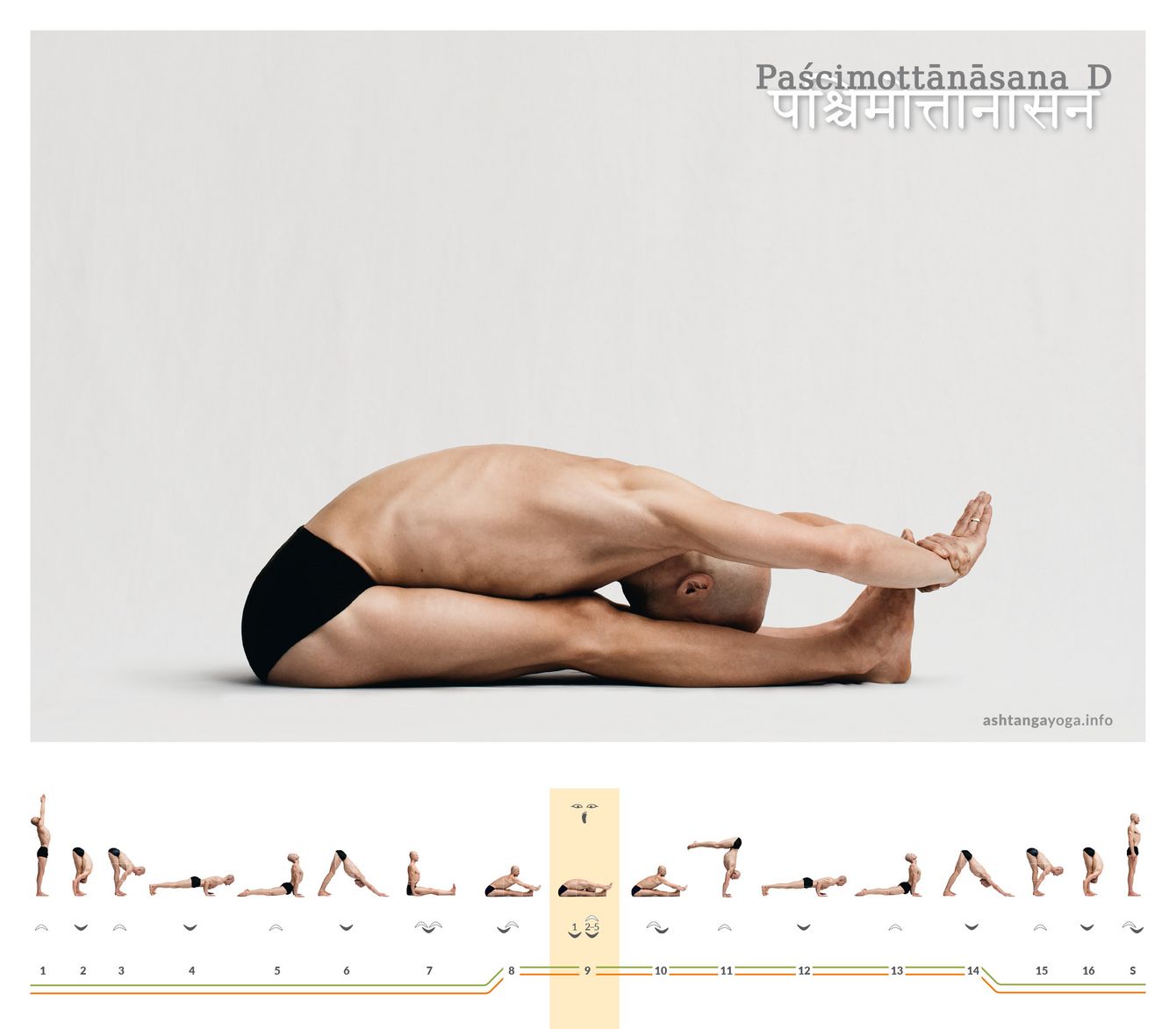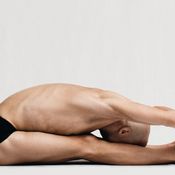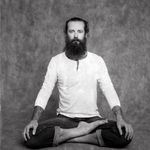

Directly from the end of Vinyāsa 9 (AYI 11) of the previous flow of movements.
Vinyāsa 8 - Exhale. INhale:
When you come out of Vinyāsa 11, exhale and reach around the feet with straight arms. Inhale and lengthen the spine. Coming directly from Vinyāsa 9, you only need a single inhale for this movement.
Try this: Depending on flexibility, you can grasp your left wrist with your right hand.
Vinyāsa 9 - Exhale. 5 breaths:
Exhale and start to fold first from the pelvis and then complete the forward bend as you bend the elbows out to the sides. Allow the crown of the head to grow towards the toes until your fifth exhalation.
Note: It is a question of proportions as you how close the crown of the head comes to the toes. With a little practice, people with shorter legs can reach the big toes with less effort. For others, the crown of the head remains farther away. To go further forward, you can bend the elbows.
Vinyāsa 10 - Inhale. Exhale:
Starting from the sternum, inhale and straighten the spine. When the arms are extended, exhale.
Vinyāsa 11 to 14:
Follow the vinyasa as you know it until downward dog.
In the traditional count, from here you flow directly into the next posture.
Effect: Repetitive stretching is considered the most effective way to improve flexibility. The principle behind this consists of alternating stretching with movement. The practitioner holds the stretch for 30 seconds each time in order to align and thus deform the fascial lines, and also warms them up for the next stretch. These four seated forward bends (paścimottānāsana) of the Primary Series of Aṣṭāṅga Yoga are based on precisely this principle.


 Dr. Ronald Steiner
Dr. Ronald Steiner
 Richard Pilnick
Richard Pilnick

Messages and ratings